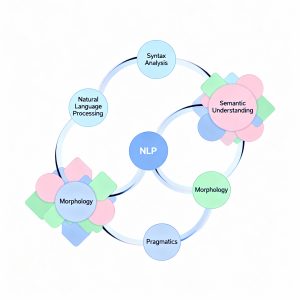Integrating revenue data pipelines with third-party systems is a critical component for organizations seeking accurate and timely revenue recognition. A well-designed testing and integration strategy not only ensures data reliability but also streamlines operations and minimizes manual intervention. This article explores a comprehensive approach to testing such integrations, highlighting methods to reduce latency, automate verification, and improve system resilience.
Challenges in Revenue Data Pipeline Testing
Organizations often encounter several obstacles when validating data pipelines, especially when working with complex products and large datasets. Limited data in development environments makes it difficult to replicate production edge cases. Manual verification processes introduce risks of human error and extend the time required to confirm data accuracy. Additionally, synchronizing data to a warehouse like AWS Redshift can introduce significant latency, delaying the feedback loop for developers.
Optimizing the Testing Process with a Staging Pipeline
To address these challenges, a staging pipeline was introduced to run in parallel with the production pipeline. This setup allows immediate access to data after report generation by publishing results to AWS Glue tables, which can be queried instantly using Redshift Spectrum. By validating changes in a staging environment with production data, teams can compare outputs and catch discrepancies before updating the production pipeline. This approach minimizes risk and accelerates the testing lifecycle.
Generating Comprehensive Test Data
Given the diversity of products and revenue calculation requirements, generating realistic test data is essential. The process involves identifying potential edge cases that may occur in production and replicating them in the development environment. Manual creation of these data points can be tedious due to the number of required database tables. As a result, the staging pipeline is often leveraged for scenario verification, with plans to automate test data generation in the future to further enhance efficiency.
Implementing Data Integrity Checkers
Robust integrity checkers are vital for comparing pipeline outputs with source data. Key metrics include:
- Percentage of contracts matching billed revenue (targeting 99.99% accuracy)
- Number of contracts with mismatched discounts
- Contracts lacking equivalent invoices
- Detection of duplicate or outdated contract lines
Both monthly and daily integrity checks are used. Monthly checks compare pipeline and billing system data via SQL queries, while daily checks enable rapid verification following pipeline runs by querying AWS Glue tables. Discrepancies are promptly investigated and resolved, ensuring continuous data reliability.
Validating Data Formats for Third-Party Uploads
Before uploading data to external systems, format validation is crucial. A schema validation batch retrieves field mappings from the third-party system using REST APIs and compares them against internal data schemas. This step prevents upload failures caused by mismatched columns or data types, improving the reliability of the integration process.
Streamlining Data Ingestion and Upload
The integration layer includes an upload batch that compresses and uploads large data files to the external system. Two primary upload methods are supported:
- REST API Uploads: Simple to implement but limited by file size restrictions (up to 50,000 records per file) and occasional reliability issues.
- SFTP Uploads: Preferred for handling larger files (500,000–700,000 records), reducing the number of files and simplifying the upload process. SFTP also offers enhanced security and a less complex setup across multiple pipelines.
After evaluating system requirements and data volumes, SFTP was adopted as the primary upload method for daily batch processes.
Ensuring External System Support and Issue Resolution
Successful integration requires ongoing monitoring and clear support channels. Common issues such as SFTP server downtime, upload job failures, or insufficient table space are addressed through established escalation procedures and close collaboration with third-party support teams. Maintaining detailed documentation and communication protocols ensures swift issue resolution and minimal disruption.
Future Improvements
Continuous improvement is central to maintaining a robust integration strategy. Planned enhancements include:
- Automating test data generation to cover more scenarios and reduce manual effort
- Optimizing data generation pipelines for better performance and clarity
- Improving maintainability by allowing selective inclusion of product types
- Enhancing integrity checkers for more precise discount and revenue matching
- Developing a user interface for third-party data uploads, including upload history tracking to reduce manual coordination and dependencies
Conclusion
A systematic approach to testing and integrating revenue data pipelines with third-party systems is essential for ensuring data accuracy, reducing latency, and supporting business growth. By leveraging staging pipelines, automated integrity checks, and efficient upload methods, organizations can achieve reliable and scalable revenue recognition processes. Future enhancements will further streamline operations and adapt to evolving business needs.
Read more such articles from our Newsletter here.



